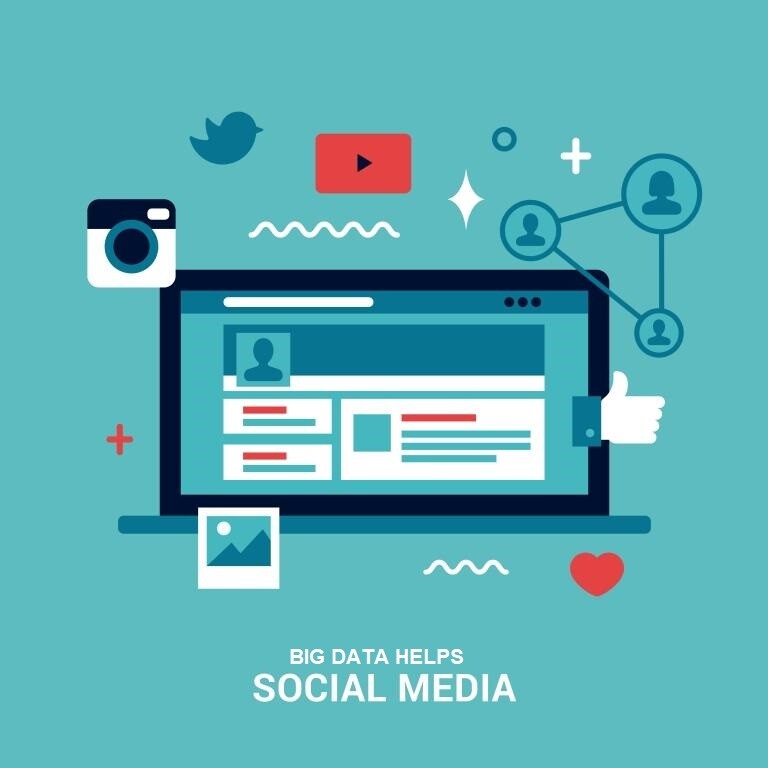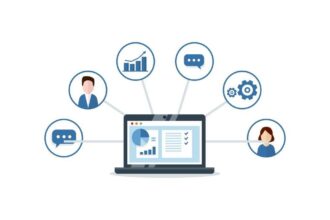Did you know there are over 3.5 billion Facebook users? Social media has become the best way to market your brand when you want to reach specific audiences. There are 50,000 or more new posts on Instagram every day, and nearly 500,000 Tweets a day. So how are all these brands becoming so visible overnight? They are using data to target new and previous customers. This data can be used for display ads, influencer marketing, audience profiles, new product research, or user research.
However, the best part with data is that you know exactly the size and reach of your audience based on targeting factors. You can instantly estimate marketing budgets around reaching these audiences, and there are ways to use data to target current and returning customers for a higher return.
How to Use Data for Social Media Marketing
Data helps you identify the important social trends, signals, audience interests, and cues needed to market your brand successfully in less time. With data insights, you can spend less money on market research and target your audiences directly using targeting tools on Facebook, Instagram, Twitter, and Pinterest.
Every social media site offers some form of business account that opens up a wide world of data targeting. You can access it on Facebook by going to the Facebook Business Manager, and since this network owns Instagram, you can access Instagram data as well.
You can also use analytics such as Audience Insights on Facebook, Instagram Analytics, Pinterest Analytics, and Twitter Analytics to access data on your posts, engagement, mentions, and other important metrics. If you want to dig deeper, you may need a third-party app such as Buffer or SocialReport.com.
Businesses can also plug in their own customer data to build custom audiences on Facebook. This method requires that you have a CSV containing an email or phone list. These customer lists or email subscriber lists allow you to match profiles on Facebook and Instagram. If you have new products coming out or just want to remarket using your own CRM data, this is a great way to get visibility with very little investment. That spells a huge ROI if your ads shine on the timeline and Instagram feeds.
Want to track down conversions and other analytics? You need to install these tracking tools below. Some of these resources like Google Tag Manager may not be necessary and could require specialized web development skills to set up. There are plenty of third-party freelancers who can do this for you. There are also ways to import a list of influencers to help with your campaigns.
- Google Analytics
- Google Tag Manager
- Facebook Pixel
- HotJar tracking code.
This is just the beginning. You may want to talk to a marketing specialist who can quickly guide your business to understanding all of the data available.
What Can You Improve with Social Media Data?
Data helps with all kinds of social marketing and research. Here are a few outlined below:
- Use data clusters for audience micro-targeting with your social advertising campaigns. You can target by age, behavior, geo-location, demand market, interests, pages liked, previous purchases, and so much more.
- If you have never played around with Facebook’s audience targeting options in Ad Manager, then your business should set up Ad Manager to access this tool and start seeing audience reach and size estimates for every campaign. You could reach audiences on Facebook with as little as $50 per day.
- Learn what your customers care about. You can use Audience Insights to see your posts and engagement to learn what motivated your followers to share or comment. You can also use tools to track brand mentions around the web.
- Do you have a list of influencers you want to track and market to? Use influencer marketing software to import lists of accounts with lots of followers, find new followers, and automate your campaigns.
How Data Helps with Influencer Marketing on Social Media
Influencers are the way of the future. These individuals and partner brands on Instagram can instantly make your products go viral. With hundreds of thousands of influencers ranging from 20,000 to over 50 million followers, it’s hard to know what influencers to track and engage with. That’s where an influencer marketing campaign comes in handy. There are a few software tools out there that help you import influencer account lists, syncs communication and revenue, aggregates content, and attributes influencers when a sale happens.
This kind of software makes it incredibly easy to market on social media through influencers. Through brand ambassadorship, partner campaigns, and contests, you can use popular social media influencers to sell anything online.
Start Accessing Your Data
Data is mostly about the tools you use. If you don’t know much about your audience yet, go to your social media profiles and check out the insights first to get a look at your most active posts and times of the day. This data set helps businesses improve how they engage directly with their content, but there are tons of other metrics to look at, such as social media referrals through Google Analytics or conversions from Facebook from the Facebook Pixel.










